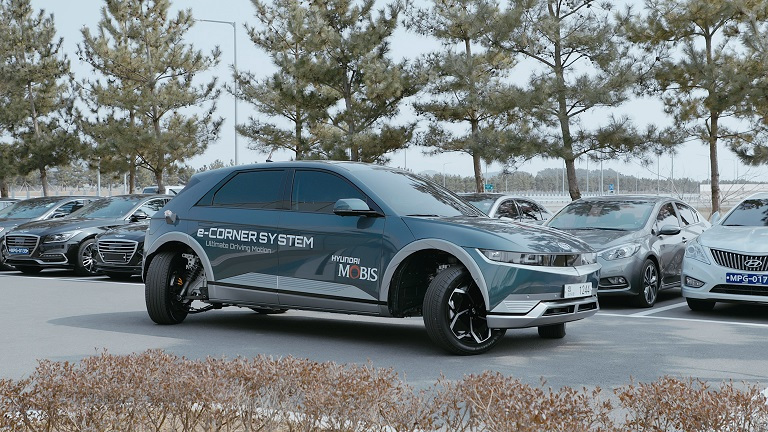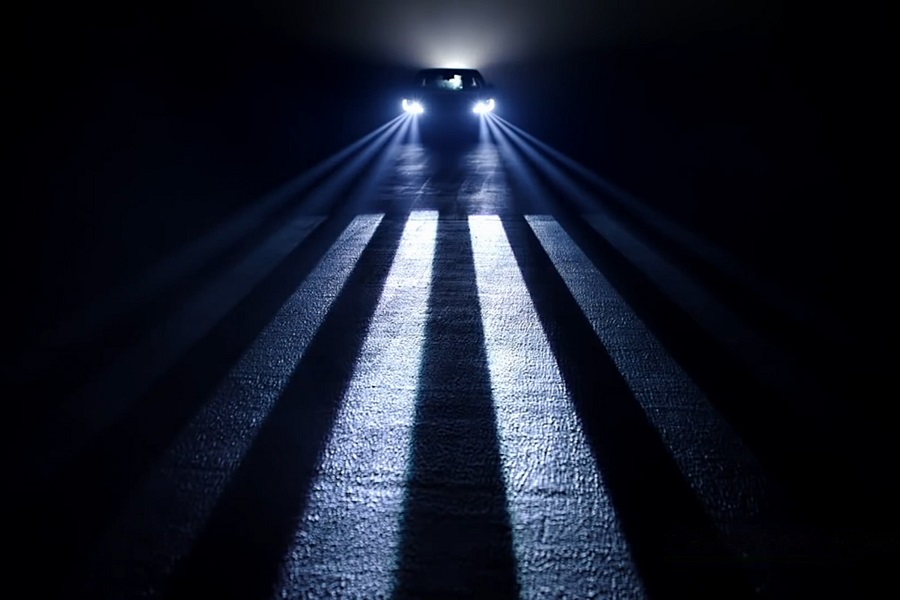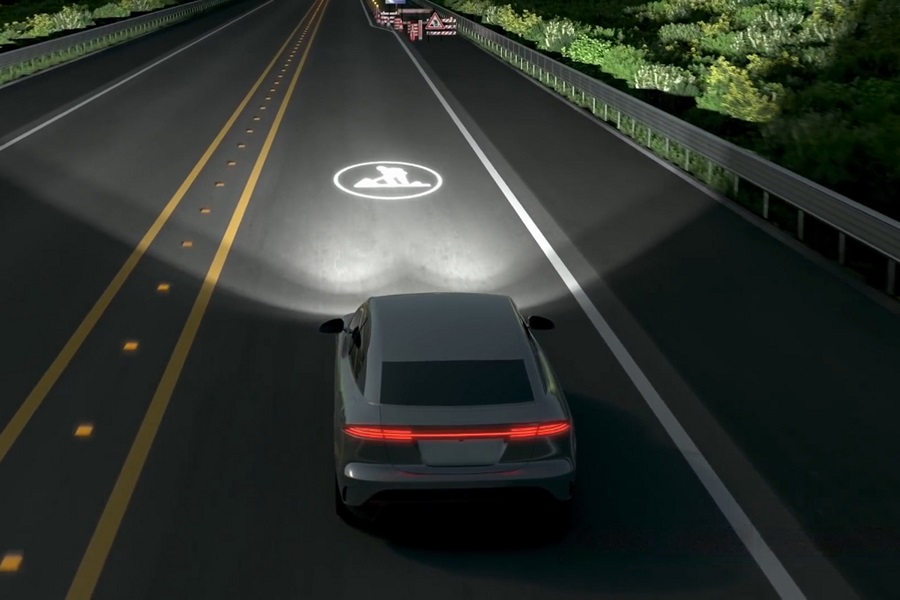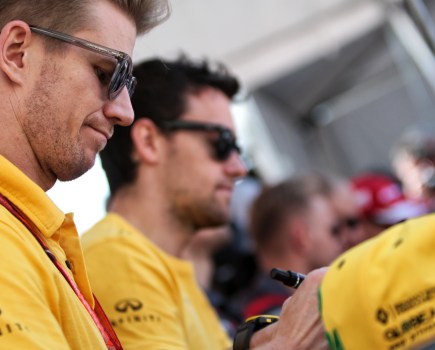Car heads-up displays are getting increasingly clever, but these proposed graphic display headlights from Hyundai Mobis take things to a whole new level.
As car manufacturers look into the future to shape the next evolution of car interiors, it’s become apparent that augmented graphics and further developed heads-up displays are the route that they want to take next. For example, BMW’s upcoming ‘Neue Klasse’ of vehicles will infuse all sorts of virtual reality wizardry into the cabin space. In that instance, graphics will project onto the windscreen, but this new headlight development from Hyundai Mobis takes graphic overlays into the real world, beyond the cabin.
Before we get into that though, here’s a bit of the backstory…

What is Hyundai Mobis?
Hyundai is a familiar brand name to anyone with an interest in cars, but once you stick that extra ‘Mobis’ on the end, it’s fair to say that things become a little more hazy. Separate to the car manufacturer, Hyundai Mobis is an off-shoot of the South Korean powerhouse which focuses solely on technology rather than actual vehicle design or engineering.
In past years, they’ve come up with some pretty cool ideas. For example, they recently showed off a modified Hyundai Ioniq 5 endowed with what they referred to as ‘e-Corners’. Essentially, this involved electric motors at each corner of the car, tasked with turning the wheels up to a full 90 degrees. As such, the Ioniq 5 could crab walk, do a U-turn on the spot, or effortlessly sidle into a parallel parking space. Pretty nifty!
Anyway, the next development to come from Hyundai Mobis is this advanced headlight tech. More on that, next…

What is the purpose of graphic display headlights?
Rather than attempting to make their headlights shine brighter or further (regular LEDs or HIDs are already pretty good), Hyundai Mobis has focused on instilling them with more functionality. Put simply, these headlights make use of a vast array of micro LEDs, which communicate with the car’s sensors and GPS. Together, the system works in unison to project road signal graphics onto the road ahead.
For example, at the top of this page, you can see a render of the system informing the driver about the construction zone up ahead (before it comes into visual range). Or, to give you another example, you can see an instance just above of the headlights displaying a crosswalk on the road. This is intended for use when pedestrians are nearby waiting to cross a dark road, allowing them to walk to the other side more safely.
Why do this? Well, Hyundai Mobis claims that such technology will not only give more warning to drivers of upcoming hazards, but also offer a greater deal of communication between the car and pedestrians. Overall, Hyundai Mobis hopes that such technology could reduce the amount of nighttime accidents.
How does it work?
These graphic display headlights make use of around 25,000 micro LEDs, each of which are thinner than a human hair. For context, that’s about 250 times more LEDs than the typical amount you’d find in a current mass-produced LED headlight.
Light emitted from these LEDs is then reflected by 1.3 million digital mirrors, designed with the ability to project shapes and symbols as well as simple beams of light.
So, what do you reckon? Valuable bit of new kit, or is it all a touch too gimmicky?








